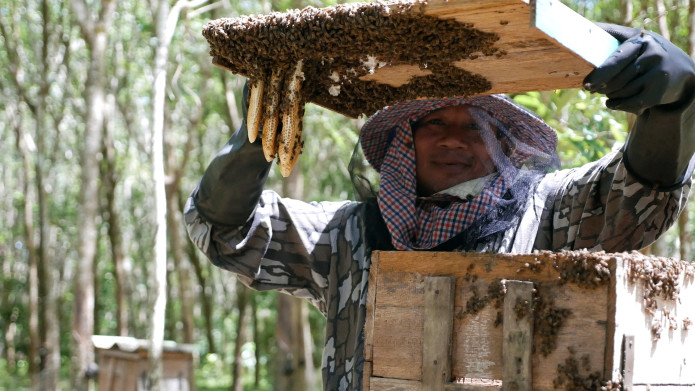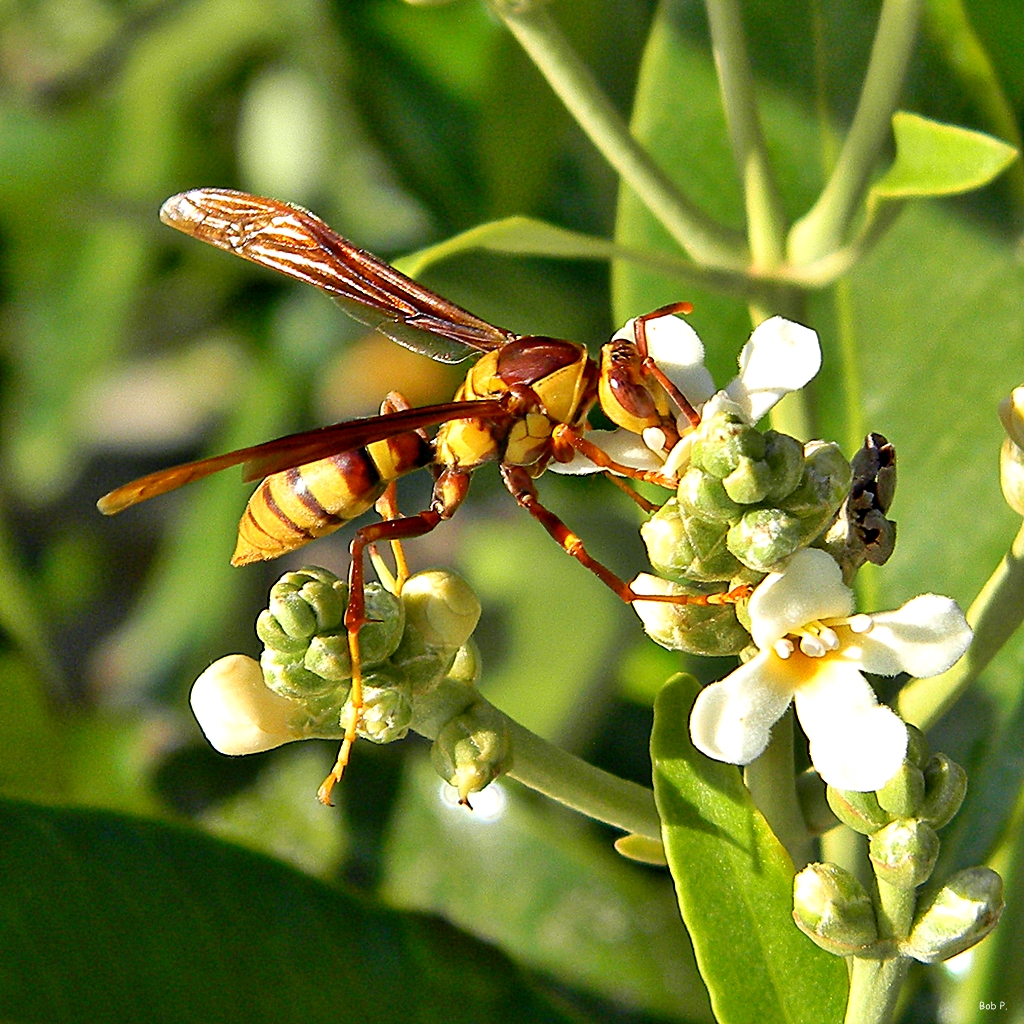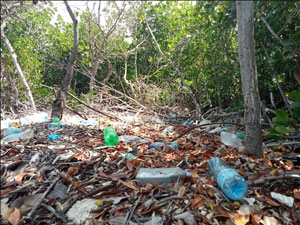MAP Website en Español haga clic aqui Living with Bees in Thailand

THAILAND – At least half of all mangrove forests in Thailand have been destroyed, leading to many negative impacts to the coastal environment and people. As sea levels continue to rise with an increase in extreme weather events, coastal communities have become extremely vulnerable. But there is hope….At the edge of the sea on the Andaman Coast in Southern Thailand, villagers are nurturing bees and adapting their relationship with forests to fight the changing climate. This March 2022, I will be going out to Thailand to film the first of a series of 12-minute mangrove shorts. Living with Bees will shine a light on an incredible connection one village has developed with pollinators, as we follow one woman’s journey of discovery; that introducing bees into the mangroves could be the key to saving her and her village. Help us to spread the word to everyone you know. This is your chance to share the project to make a lasting difference. If you wish to collaborate and sponsor special equipment, services, your photographs or artwork for the film, we’d love to discuss this with you. Post with the hashtag #LivingWithBees to share this project and to tell us what you think about this. READ MORE GLOBAL The Surprising Biodiversity Hidden in the World’s Fragile Mangrove Forests

GLOBAL – Mangrove forests protect coastal ecosystems around the world from erosion and serve as habitats for an amazing array of fish, birds and other species. But because of the groves’ low levels of plant diversity, scientists have long assumed these famously twisty, salt-tolerant trees didn’t play host to many insect species. A study published last year in the journal BMC Biology turns that assumption on its ear. Mangroves, the research reveals, are hotspots of insect biodiversity. To reach this startling conclusion, a team of scientists from Singapore and other countries spent four years studying more than 140,000 insect specimens from 107 sites in mangroves and other habitats in Southeast and East Asia. They discovered an enormous and diverse number of insect species living in the mangroves — including more than 3,000 species in Singapore alone. READ MORE NASA Study Maps the Roots of Global Mangrove Loss

GLOBAL – Mangroves have been threatened by deforestation for decades, as agriculture and aquaculture, urban development and harvesting have caused the loss of more than a quarter of mangrove forests in the past 50 years. Forests in Southeast Asia have been especially hard-hit, as countries like Indonesia clear mangroves to make room for shrimp and rice farming. When planning conservation or restoration efforts for these crucial forests, experts need to know what the primary human and natural threats are for their area. Using high-resolution imagery from Landsat 5, 7 and 8, Fatoyinbo and her colleagues used machine learning algorithms to create a high-resolution map of mangrove losses between 2000 and 2016, with an important addition: They showed what drove those losses. The team found that nearly 1300 square miles of mangrove forests were lost during the study period, or about 2 percent of global mangrove area. Sixty-two percent of the lost area was due to human causes, mainly farming and aquaculture. The rest was due to natural causes, including erosion and extreme weather events. READ MORE AFRICA Mangroves in Lamu under threat from plastic waste pollution

KENYA – Mangroves forests in Lamu are choking from a pileup of plastic waste dumped into the ocean that eventually finds its way into the forest, threatening their existence. Affected areas with high mangrove population include Mokowe, Manda, Mkanda, Pate, Kizingitini, Faza, Kiwayu, Matondoni, Kipungani, Wiyoni, Mkokoni, and Kiunga across the Lamu archipelago. There is a concern that continued accumulation could endanger these forests and the ecological and human communities depending on them. Lamu environmentalist Aki Skanda said there is a real concern on the increased accumulation of plastic waste in mangroves across the county. This is despite a national ban on plastics that was imposed in 2017 outlawing the manufacturing, sale and distribution of plastic carrier bags. READ MORE RELATED STORY – Flipflopi dhow sets off on scientific tour of Lamu

KENYA – The Flipflopi, a dhow made entirely from recycled plastic waste, has set sail on a scientific expedition of Lamu. The expedition is intended to map the extent of plastic pollution on the remote archipelago. The dhow took off from Lamu island and is headed to mangroves, beaches and towns in all the 35 islands in the region. This is the first step in informing the development of locally grown circular economies, as well as understanding the impact of massive waste on the local environment. Flipflopi project co-founder Ali Skanda, explained that over the next ten days, the crew of over 20 will be carrying out the scientific research. READ MORE Restoration of mangroves in Senegal

SENEGAL – In the Saloum Delta in Senegal, rising seas are increasing the salinity in mangrove ecosystems, damaging these precious forests. Mangrove forests provide many important ecosystem services. For local communities, the unique fishing opportunities mangroves offer represent livelihoods and nutrition. For fish, mangroves are habitats to spawn, grow and shelter thanks to cooler waters, higher oxygen content and sprawling roots that act as a sanctuary from larger prey. Located at the intersection of land and sea, mangroves play a key role in coastal erosion control and provide protection from storm surges for coastal communities and habitats. FAO, the United Nations Environment Programme (UNEP) and other international conservation partners have set out to protect and restore these forests and safeguard the livelihoods of fish dependent communities in and around the Siné Saloum Delta. With financial backing from GEF, the programme, called the Coastal Fisheries Initiative (CFI), is restoring degraded mangroves so that they can retain their important role in balancing ecosystems. The Initiative is regenerating land and replanting large areas of mangroves, while also working with communities to rethink how they can utilise and conserve them. In 2020, 175 hectares of mangrove ecosystems were sustainably managed. READ MORE Stop this total madness

AFRICA – Oil giant Total is about to build the biggest heated oil pipeline in the world — right through the heart of Africa! It will rip through some of the most important elephant, lion and chimpanzee reserves on Earth, displace tens of thousands of families, and tip the whole planet closer to full-blown climate catastrophe. Local communities are doing all they can to fight the project, but they’re up against one of the most powerful companies on Earth, and they need help to turn this into a Standing Rock in Africa. Our movement can be that help! Even as he plans this pipeline, Total’s French CEO is trying to paint his company as a climate leader. Let’s hold him to account with a massive petition — when it’s huge we’ll deliver our voices to the banks financing the project and turn this into a PR nightmare for Total. Add your name to stand with the brave communities fighting this — before it’s too late! SIGN THE PETITION AMERICAS Adopt a mangrove to help protect Florida’s coastline

USA – There is an initiative to protect our coast that involves adopting a plant. One island group is asking people to become ‘mangrove mamas’ right from their homes. The Sanibel-Captiva Conservation Foundation (SCCF) is looking for people to adopt a mangrove. Kealy McNeal, the community conservation coordinator at SCCF, said, “We’re asking the community for help to grow mangroves at their homes that will then be planted at these restoration sites in the next few years.” They won’t be like the big ones you see when you’re out on the water. Instead, they will come in their own little pot with just one or two leaves. Mariana Pardo is a mangrove foster mom for a second time. “I have the experience down pat.” She was part of the pilot program last year and fostered five mangroves. “Pedro, Pablo, Chacho, Josiento and Jose. Those are all of their names,” Pardo said. READ MORE More mangroves growing in Northeast Florida

USA – Mangroves are a common sight in South Florida, and will sometimes spread as far north as the coast of Northeast Florida in parts of Nassau, Duval and especially St. Johns County. Chief Meteorologist Mike Buresh joined park rangers to take a look at the spread of mangroves into the local area. While not uncommon, the difference now is that the spread of the mangrove trees may continue essentially uninterrupted because of fewer severe freezes — a possible product of climate change. That alone is not a bad thing. Mangroves can decrease storm surge, increase elevation and make for great habitat for marine life. The potential problem is mangroves are not freeze tolerant. If mangroves become dominant, the marsh grasses will diminish, so when the next big freeze occurs (temperatures in the 20s for at least a few hours), a die-off of the mangroves would leave nothing to protect the marshes. READ MORE ASIA Grasses spur mangroves to grow in an erosion-riddled Sundarbans patch

INDIA – Baby mangroves with leathery leaves peep out through lush meadows of grass that greet the Bay of Bengal. Soon enough these densely clumped blades and tufts of salt-tolerant grasses, in a degraded patch in the Indian Sundarbans, will fix the erosion-riddled saltmarsh to aid mangroves to expand their turf. “As they change the sea-soaked soil for the better by pumping in lost nutrients, the grasses support mangrove expansion in a variety of ways. They protect against erosion, shield from sea wave energy, trap mangrove seeds dispersed by tidal currents and offer structural support to the seedlings,” says Ranjan Pradhan, a mangrove restorer and resident of the Indian Sundarbans in West Bengal. Pradhan tends to the grass meadows that are in transition to support mangroves at the degraded patch on the Durbachoti island in the western part of the Indian Sundarbans. READ MORE OCEANA Researchers call for action to save mangroves and seagrasses

AUSTRALIA – Ambitious targets are needed to help save mangrove forests and seagrasses, according to a new study led by Griffith University researchers. Effective conservation will rely on stopping the loss of existing ecosystems and re-establishing ecosystems in places where they have already been lost or degraded, the study suggests. “Pairing global observations of mangrove and seagrass coverage change through time with modelled changes, we demonstrated that only protection and restoration combined can support substantial gains in coverage of these ecosystems into the future,” says Professor Rod Connolly, director of the Coastal and Marine Research Centre and The Global Wetlands Project based at Griffith University. According to the Marine Education Society of Australasia, Australia has the world’s third-largest area of mangroves and is home to approximately half the planet’s mangrove species. READ MORE FEATURED VIDEO How we get tree planting wrong
 Like this newsletter?
Pease consider donating to MAP to keep it going.
Giving could never be easier  *Articles in this newsletter may mention practices being used and/or show exagerated results being claimed without proof. Stories are presented here in effort to show mangrove related activity around the world and do not necessarily reflect Mangrove Action Project’s views or mangrove restoration best-practices. | ACTION ALERTS
Stop this total madness Stop the biggest heated oil pipeline in the world — right through the heart of Africa!
CLICK HERE Strengthen 60 Women Farmers in El Salvador
DONATE HERE Stop construction work on a private port In Defense of the Quilombo Boca Do Rio TAKE ACTION! Tell Sumitomo to stop building polluting coal power in Bangladesh! TAKE ACTION!
Like this newsletter? Pease consider donating to MAP to keep it going. Giving could never be easier 
MAP Website en Español
haga clic aqui ORDER YOUR 2022 MAP CHILDREN’S ART CALENDER HERE
 13 Year old Linda Li “Mangrove Adventure” from Kid Dream Art School

WATCH NOW 
Restoring The Natural Mangrove Forest
Watch movie

Community Based Ecological Mangrove Restoration in Rufiji Delta VIEW VIDEO
Video: Mangroves for the Future
View Here WANT TO GET INVOLVED?
Follow and Join MAP!    
Like this newsletter? Pease consider donating to MAP to keep it going. Giving could never be easier 

Interested in connecting or working with MAP? Check out our opportunities here 
MANGROVE ISSUES Want to learn more about mangroves?
Our short presentation will give you a better understanding of the issues we are working to solve. WATCH PRESENTATION What is CBEMR? Download MAP’s 2 page CBEMR Information Sheet containing links to all MAP’s CBEMR resources – CLICK HERE View MAP’s uploaded Videos at
MAP Video Gallery Question Your Shrimp Consumer/Markets Campaign!
WATCH VIDEO Mangroves: Guidebook to Malaysia – Click Here SHARE MAP’S VISION
CLICK HERE to watch short introductory video. Together we can work “at the roots of the sea”. Our short documentary, Reducing the Risk of Disaster through Nature-Based Solutions : Mangroves 
NASA Study Maps the Roots of Global Mangrove Loss

Marvellous Mangroves Curriculum The Marvellous Mangroves Curriculum begins with a simple philosophy – getting future generations to not only learn about, but understand the importance of mangrove forests. VISIT 
The award-winning Marvellous Mangroves (MM) curriculum educates children on the importance of mangroves and their ecological functions, teaching them about modern challenges and mechanisms for sustainability. VIEW VIDEO Marvellous Mangroves Curriculum in Bangladesh – WATCH VIDEO
MARVELLOUS MANGROVES IN BRAZIL
En Portuges 
Marvellous Mangroves – A Curriculum-Based Teachers Guide.
Like this newsletter? Pease consider donating to MAP to keep it going. Giving could never be easier 
“Question Your Shrimp” Campaign Question Your Shrimp – is it really sustainable? Sign the Petition
Note to Our Readers: We strive to keep active links in our newsletter. However, due to circumstances beyond our control, occasionally links to stories may become broken. If you find a link to a story is not functioning, please cut and paste the headline into your browser search bar. In most cases you should be able to locate the original story.
Not yet a MAP News subscriber?
Click here to subscribe.  *Articles in this newsletter may mention practices being used and/or show exagerated results being claimed without proof. Stories are presented here in effort to show mangrove related activity around the world and do not necessarily reflect Mangrove Action Project’s views or mangrove restoration best-practices. *Articles in this newsletter may mention practices being used and/or show exagerated results being claimed without proof. Stories are presented here in effort to show mangrove related activity around the world and do not necessarily reflect Mangrove Action Project’s views or mangrove restoration best-practices.
|

























